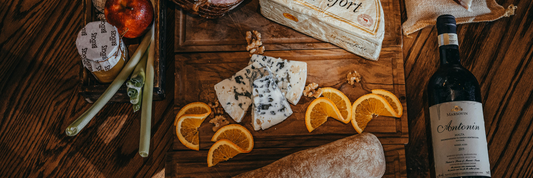Bread, a daily staple, requires proper storage to maintain its freshness. Improper storage can lead to mold and dryness. This today article will guide and explore various storage methods and tips to keep your bread fresh and flavorful.
Traditional Ways to Store Fresh Bread
Bread Rack or Basket:
- Advantages:
- Promotes optimal air circulation, minimizing the risk of mold and preserving texture.
- Allows for easy access and display.
- Adds a touch of rustic charm to your kitchen.
- Disadvantages:
- Requires more space than other methods.
- May not be ideal for very moist or dense breads.
- Can be prone to dust accumulation.
Countertop:
- Advantages:
- Convenient and accessible for daily use.
- Allows for easy slicing and serving.
- Ideal for breads that are consumed within a few days.
- Disadvantages:
- Can accelerate the drying process, especially for softer breads.
- May attract pests if not properly covered.
- Can be prone to temperature fluctuations, which can affect the bread's texture and taste.
Paper Bag:
- Advantages:
- Absorbs excess moisture, preventing the bread from becoming soggy.
- Helps maintain a consistent humidity level inside the bag.
- Economical and readily available.
- Can be easily disposed of.
- Disadvantages:
- May not be as effective for very moist breads.
- Can be easily torn or damaged.
- May not provide as much protection against external factors like dust and pests.
Cloth Napkin:
- Advantages:
- Provides a natural and breathable barrier between the bread and the environment.
- Helps regulate humidity and prevent drying.
- Adds a touch of elegance to your kitchen.
- Can be reused multiple times.
- Disadvantages:
- May need to be washed frequently to prevent mold and mildew.
- Can be more expensive than paper bags.
- May not be as effective as other methods for long-term storage.
 Bread Store Method: Refrigeration
Bread Store Method: Refrigeration
Advantages:
- Extends shelf life: Refrigeration can significantly prolong the freshness of bread, especially during hot weather.
- Inhibits mold growth: Cold temperatures can slow down the growth of mold and other microorganisms.
- Maintains moisture: Refrigerating bread can help prevent it from drying out too quickly.
Disadvantages:
- Accelerates staling: Refrigerating bread can sometimes cause it to stale faster, especially for softer varieties.
- Changes texture: The texture of bread can become slightly firmer or denser when stored in the refrigerator.
- Requires more space: Refrigerating bread takes up valuable space in your refrigerator.
Best Practices:
- Wrap securely: Wrap bread in plastic wrap or aluminum foil to prevent moisture loss and exposure to air.
- Consume promptly: While refrigeration can extend shelf life, it's best to consume refrigerated bread within a few days to maintain optimal quality.
- Consider bread type: Some bread types, such as sourdough, may tolerate refrigeration better than others.
Bread Store Method: Freezing
Advantages:
- Long-term storage: Freezing can preserve bread for several months.
- Maintains freshness: Frozen bread can retain its flavor and texture for extended periods.
- Versatility: Frozen bread can be easily defrosted and toasted or used in various recipes.
Disadvantages:
- Initial effort: Freezing bread requires slicing, wrapping, and sealing.
- Defrosting time: Defrosting frozen bread takes time and may result in some moisture loss.
- Texture changes: Frozen bread may have a slightly different texture than fresh bread.
Best Practices:
- Slice before freezing: Slice bread into desired portions to avoid defrosting the entire loaf at once.
- Wrap individually: Wrap each slice in plastic wrap or aluminum foil to prevent freezer burn.
- Seal tightly: Place the wrapped slices in a freezer bag or container and seal tightly.
- Label with date: Label the bag or container with the date to track freshness.
By following these storage methods and tips, you can help ensure that your bread remains fresh, delicious, and enjoyable for as long as possible.
Tips for Longer Shelf Life
In addition to proper storage methods, certain practices can further enhance bread's shelf life and prevent premature spoilage. By following these tips, you can enjoy your bread for a longer period while maintaining its freshness and quality.
- Avoid exposure to heat: Excessive heat can accelerate the drying process and promote mold growth. Store bread away from ovens, radiators, and direct sunlight.
- Timely consumption or freezing: Consume freshly baked bread within a few days to maximize its freshness. If not consumed immediately, freeze it for later use.
- Proper sealing: Use plastic wrap, aluminum foil, or a bread bag to seal bread and prevent moisture loss, which can lead to drying and staling.
- Leverage natural preservatives: Some bread types, such as sourdough, have natural preservatives that can help extend shelf life. Consider the type of bread and its inherent properties when determining storage methods.
Conclusion
Proper bread storage is essential for preserving its freshness, preventing mold, and extending shelf life. By understanding different bread types and their unique needs, selecting appropriate storage methods, and following additional tips, you can enjoy your bread for a longer period while maintaining its delicious taste and texture. Remember to tailor your storage approach to the specific characteristics of the bread you are preserving.




